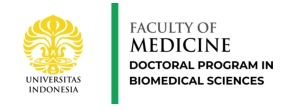By: Dr. dr. Jefferson Hidayat, Sp.An-KAKV
Tetralogy of Fallot (TF) is a complex congenital heart disease. Patients with TF will appear bluish, especially on the lips and nail tips. Examination of the heart of people with TF will show four (tetra) abnormalities including leaks in the heart chamber septum, abnormal position of the aortic blood vessels (resembling a saddle), thickening of the muscles at the base of the blood vessels to the lungs which causes blockage of blood flow and thickening of the chamber walls right.
Dangerous complications that often occur after TF correction surgery at RSUPN dr. Cipto Mangunkusumo is a syndrome of low cardiac output. Low cardiac output syndrome can be seen through cardiac output examination. The clinical sign is a decrease in blood pressure and blood flow to the organs of the body. The syndrome of low cardiac output after corrective surgery for TF sufferers is caused by ischemia-reperfusion injury, an injury that arises in the heart due to a period of disconnection of oxygen intake and re-establishment of oxygen intake when the aortic cross-clamp is clamped and released.
Various studies on experimental animals and cells have been conducted to find the right therapy for ischemia-reperfusion injury (CIRI), but the results have not been satisfactory. The experts in this field who gathered at the Hatter Cardiovascular Institute forum recommended that research for CHARACTERISTICS should be carried out in humans. The therapies under investigation should be multitarget, treating obstructed microvessels, strengthening cardiac muscle cells, and suppressing inflammation. This study chose the combination of remote ischemic preconditioning (RIPC) and cyclosporine to treat CIRI. Cyclosporine is a strong anti-inflammatory that suppresses inflammation and suppresses microvessel occlusion while RIPC is a method of strengthening the heart muscle by performing CIRI on other organs. The organ that is often selected is the lower extremities.
This study was an open-label double-blind randomized clinical trial conducted at RSUPNCM and JHC Hospital from 2021 to 2022. A total of 42 subjects with TF aged 1-6 years were randomly assigned to a control group that received standard therapy and a treatment group that received 2 hours of oral cyclosporine. before anesthesia begins, as well as RIPC immediately after anesthesia begins. The thickened heart tissue waste is taken in 3 phases, the average oxygen intake phase, the oxygen cut-off phase, and the oxygen resupply phase. The MDA test was performed, a test that measures tissue damage due to oxidative injury and mitochondrial edema. The mitochondrial edema test was carried out by isolating mitochondria and testing for mitochondrial edema using the spectrophotometric method. The function of mitochondrial isolates was tested by the JC-1 test and the purity of mitochondrial isolates was tested by the SDH test.
The results found were a consistent reduction in oxidative injury and a decrease in mitochondrial isolation although not statistically significant.
In conclusion, the combination of cyclosporine and RIPC shows promising benefits as a therapy for ischemia-reperfusion injury of the heart muscle.

